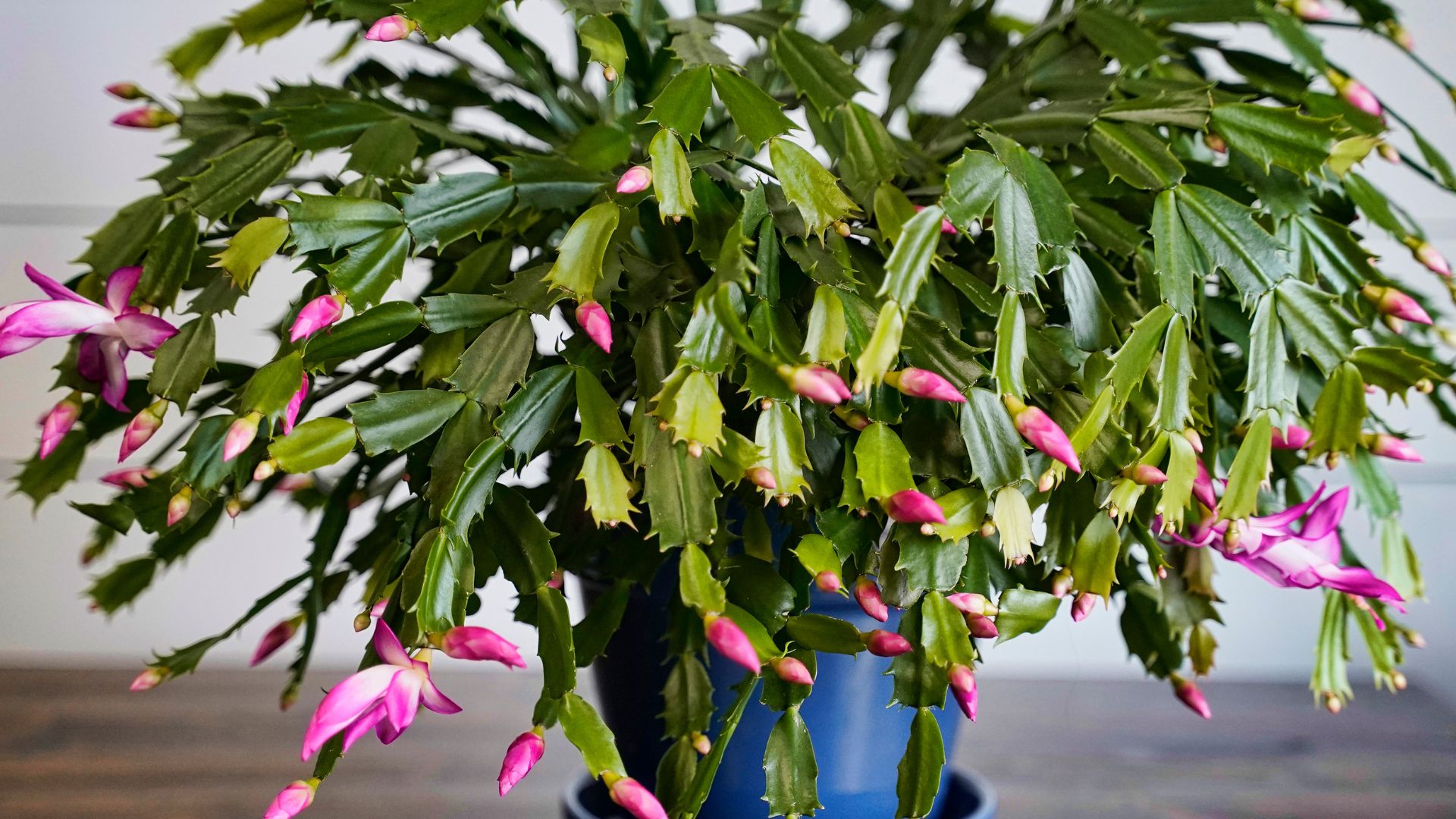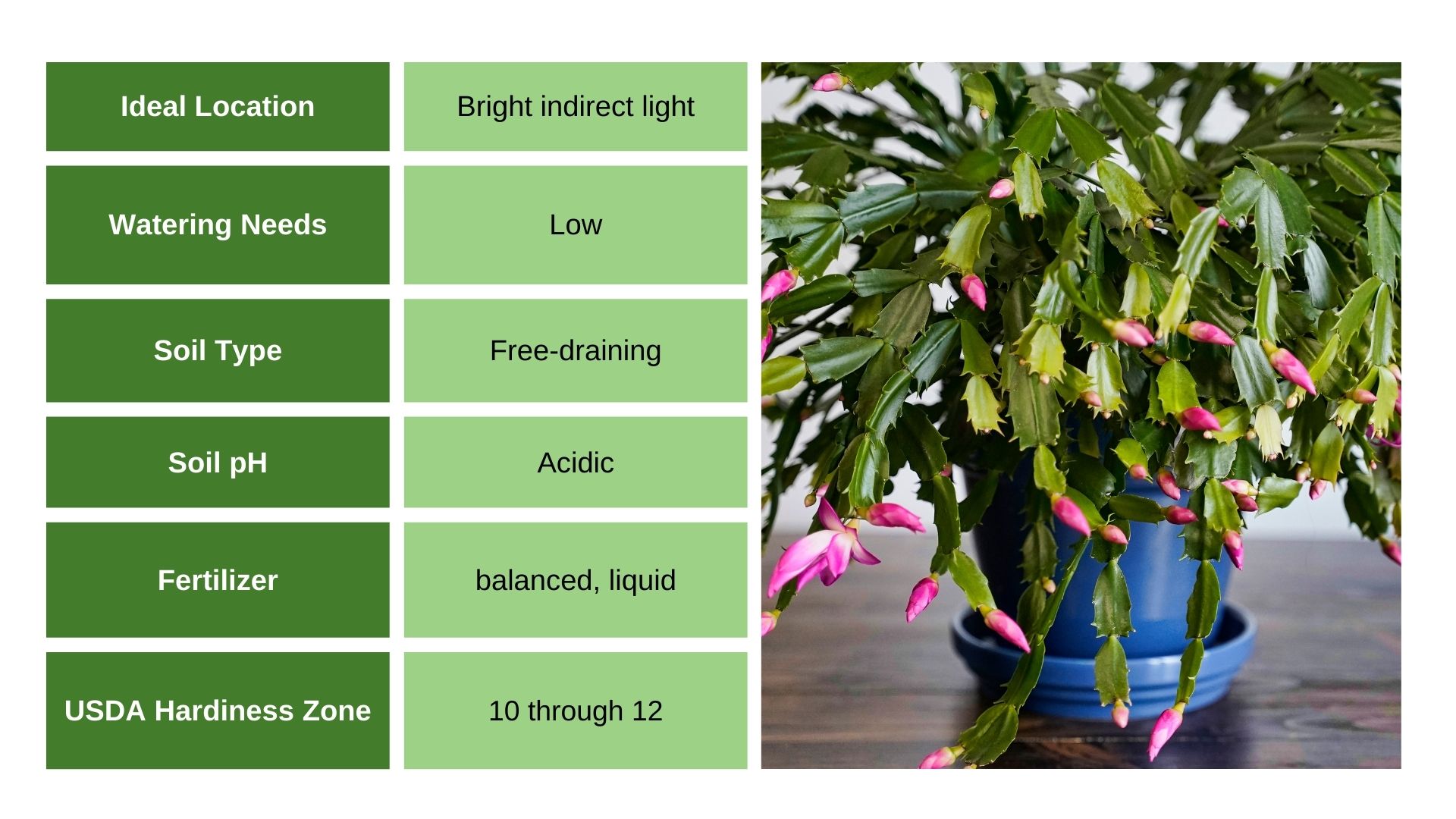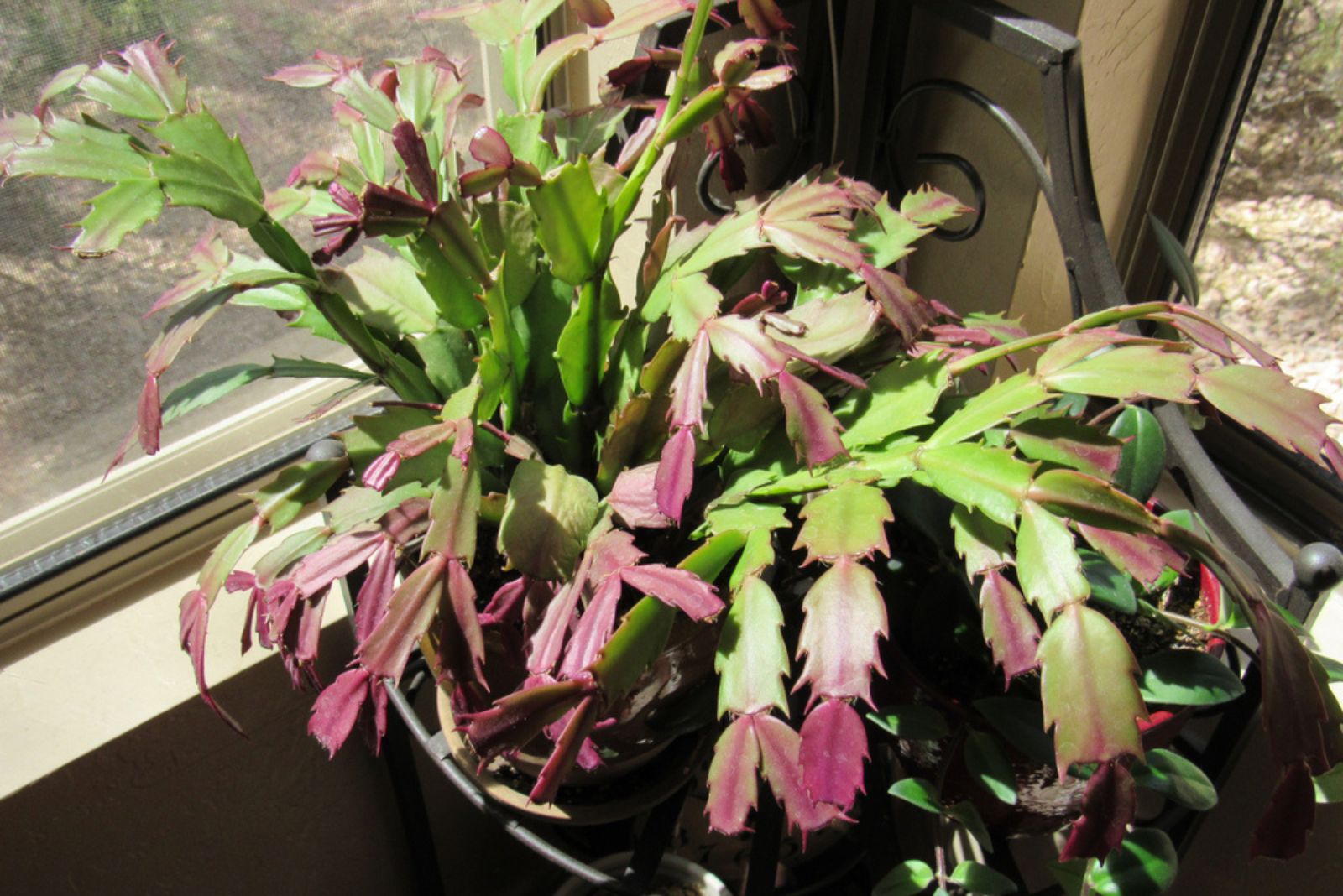Gardeners worldwide adore cactuses, especially the ones that generate blossoms. One of them is the captivating Thanksgiving cactus. It comes in various hues and adds an exotic touch to indoor spaces.
However, you shouldn’t confuse it with the Christmas cactus, which has smoother leaf edges and blooms later in the season, i.e., during the Christmas season, hence the name.
Schlumbergera plants generally have low care needs and that’s another reason why growers love them.
In this article, I’ll show you how to care for a Thanksgiving cactus and keep it happy and healthy all year long.
Before we move on, here’s a brief overview of Thanksgiving cactus care requirements.
Let’s get started!
1. Water Sparingly
All cactuses, including holiday cactuses, are succulents, and this feature actually tells us about their watering requirements.
Thanksgiving cactus can store some water in its leaves and while that’s an excellent thing for growers who don’t have much time, it has one major drawback. This plant is susceptible to root rot and it can die if its roots sit in water for too long.
So, the first thing to pay attention to is not to overwater your Thanksgiving cactus.
A rule of thumb is to water indoor cactuses when the top 2 inches of the soil dry out. You should water even less during the winter months, i.e., when the plant doesn’t grow actively.
Remember that the key to correct watering is in choosing the right cactus soil type. You can purchase a ready potting mix for succulents and cactuses or make your own. The soil must be quick-draining because compact soils retain too much moisture and can cause rotting.
If you want to make your own soil mix for your Thanksgiving cactus, you can purchase a standard soil mix and amend it with well-draining materials. Some examples of such materials are perlite, pumice, orchid bark, and horticultural sand.
The only way for the excess water to drain is to cultivate your cactus in a pot with drainage holes. When choosing a pot for your cactus, pay attention to its size because larger containers hold more soil, which means more moisture.
You should also feed your Thanksgiving cactus with a balanced, liquid fertilizer twice a month during the growing season.
Another important thing to mention is that this cactus is native to tropical regions, which means it is used to higher humidity. You can put the plant in your bathroom or kitchen, mist it from time to time, or install a humidifier nearby.
2. Ensure Enough Light And Warmth
This is a flowering plant and if you want to see an abundance of blossoms, you need to ensure enough light exposure.
The best light for the Thanksgiving cactus is bright but indirect. Too much light can quickly scorch cactus leaves and affect the plant’s overall health.
On the other hand, lack of light may lead to etiolation in your cactus, which is a term for the condition of a plant when it extends toward the light source.
So, find a spot for your Thanksgiving cactus near a sunny window. If the only spot available receives full sun, put sheer curtains on the windows to filter the light.
Pay attention to temperatures in the room where you keep this holiday cactus. The perfect temperature range during the day for the Thanksgiving cactus is from 65 to 75 degrees Fahrenheit.
As far as the night temperatures are concerned, they should range somewhere between 55 and 65 degrees Fahrenheit.
This temperature range will ensure a healthy bud formation.
It’s also important to move your Thanksgiving cactus away from cold drafts and temperature fluctuations. Spots near windows and doors that open and close too often shouldn’t be considered, and neither should spots near radiators, fireplaces, and air conditioners.
3. Prune When Necessary
Pruning is another important part of the maintenance of this type of cactus. The main reason you should prune is to get a bushier plant and maintain a more compact shape.
If your Thanksgiving cactus has been part of your home for a long time, feel free to prune leggy stems by trimming a few leaf sections from the tips. The best time to do this is when your holiday cactus finishes blooming.
It’s essential to know that you should never remove more than ⅓ of your Thanksgiving cactus because it can affect its overall health and stress the plant significantly.
Never leave any damaged, discolored, or diseased sections on your cactus because they use plant energy but they can’t recover.
When pruning your holiday cactus, make sure to use sharp and clean cutting tools to avoid breaking the plant or transmitting any pests or diseases.
Many growers have asked me if this type of flowering cactus needs deadheading. Well, the blossoms typically fall off the plant when they die. However, it’s not a mistake to remove them while they’re still on the plant; they will be dry and wilt so it’s not too hard to remove them.
Common Issues With The Thanksgiving Cactus
Cactuses are generally labeled as easy-to-maintain plants. However, that does not mean they can’t be affected by certain issues.
One of the most common issues with the Thanksgiving cactus is lack of blooms. If you’ve just bought this plant, you shouldn’t worry because these plants need 2 years to start producing flowers.
If your cactus is older and suddenly stopped generating flowers, you should check all the conditions and adjust them if necessary. Remember, infrequent watering, bright indirect light, free-draining soil, and pruning will lead to a happy and healthy Thanksgiving cactus.
Another issue that can occur is blackening. If blackening is followed by mushy leaves, you need to check the moisture level in the soil.
The most common cause of a cactus turning black is overwatering. You should repot your cactus, change the soil, and remove all the affected parts if this happens.
A Thanksgiving cactus will cheer up your home and fit into every interior design. All you need to do is to follow our tips and enjoy the numerous lovely blossoms!




